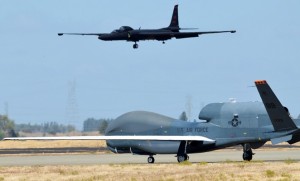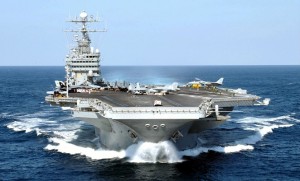
The Pentagon has released its proposed FY2015 defence budget, in which it plans to retire the USAF’s entire A-10C close air support and U-2S reconnaissance aircraft fleets.
The FY15 budget commences on October 1 this year, and the planned cuts are designed to save money for higher priority programs such as the F-35 JSF, KC-46A tanker, and the next generation long range strike bomber.
But analysts believe the Obama administration will have a tough time getting the budget passed by Congress, with representatives and senators likely to vote against any proposal that takes capabilities, industries and jobs away from their districts. Indeed, the Pentagon tried to include the A-10’s retirement in its budget last year, only to have it blocked by Congress.

“Retiring the A-10 fleet saves $3.5 billion over five years and accelerates the Air Force’s long-standing modernization plan,” Defense Secretary Chuck Hagel told February 24 Pentagon press briefing adding that it was a “40-year-old single-purpose” aircraft.
“It cannot survive or operate effectively where there are more advanced aircraft or air defences,” Hagel added. “And as we saw in Iraq and Afghanistan, the advent of precision munitions means that many more types of aircraft can now provide effective close air support.”
Analysts noted that Secretary Hagel neglected to mention the A-10 fleet had been re-winged in recent years and had also been upgraded with precision weapons and advanced sensors and communications allowing it move on from its traditional ‘tank-killer’ role.

But if Congress imposes additional cost cutting measures through its sequestration efforts, the FY15 budget has provisions in it to retire the USAF’s Global Hawk Block 40 fleet in favour of more Block 30 aircraft which would be required to replace the U-2, to decommission the aircraft carrier USS George Washington, to retire the entire USAF KC-10 tanker fleet, and to further slow F-35 production.
“This decision was a close call as [the Pentagon] had previously recommended retaining the U-2 over the Global Hawk because of cost issues,” Hagel said. “But over the last several years, DoD has been able to reduce the Global Hawk’s operating costs.”
The 104,000 tonne Washington is based at Yokosuka in Japan and is the sixth of 10 Nimitz-class carriers, and is due for its mid-life nuclear ‘refuelling cycle’ in 2015. But the Pentagon deems it will be more cost effective to decommission the vessel and to continue building new Ford-class ships. But it early retirement will see the US carrier fleet reduced from 11 to 10 ships.
















Dane
says:Would slowing the rate of production of the F-35 affect other nations delivery schedules?
australianaviation.com.au
says:I think the F-35 cuts will come by delaying the Navy’s F-35C model by a couple of years. That will probably slightly impact unit costs in the 2017/18 timeframe…where Australia will be buying 14 jets.
Cheers
Andrew
Mike
says:The A-10 would be invaluable if Korean War 2 breaks out. I’m interested to know what the justification is for potentially retiring the KC-10 over retiring an equivalent number of far more ancient KC-135s. It looks like the US is going through a similar experience to the British empire as it began to shrink down. Scary for us though sitting here at the bottom of the Pacific with an increasingly assertive and powerful China near by.
australianaviation.com.au
says:The rationale is because it’s a small fleet (~60) which is expensive to operate and maintain compared to the 400+ KC-135s. Plus the KC-46A is coming along soon and that’d make three different tanker types.
Cheers
Andrew
Dane
says:The KC-135 fleet has gone through extensive upgrades including the of the engines. A number of older models were retired but about a 1/3 were upgraded to KC-135R standard
Paul
says:Maybe NZ could buy the A10s now T6 Texan has been selected for purchase, although unsure how depleted uranium would fit with NZ’s anti nuke/clean green image with its 30mm cannon. F16-Block 60 or JAS39 NG would be a better all round choice or dare I say 10 -F35A’s
Allan
says:China Rising anyone?